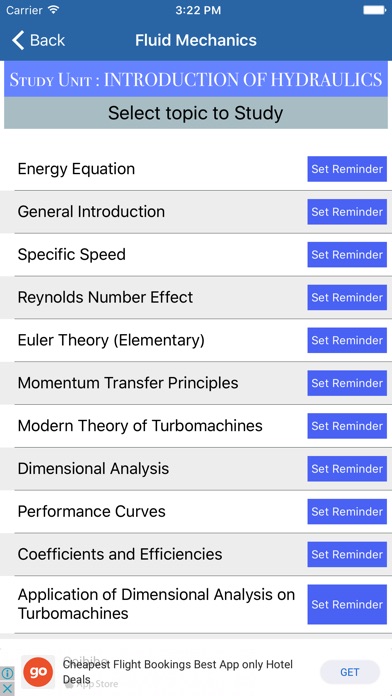
Fluid mechanics : Engineering
Fluid mechanics, the branch of science that deals with the study of fluids (liquids and gases) in a state of rest or motion is an important subject of Civil, Mechanical and Chemical Engineering.
Fluid mechanics deals with three aspects of the fluid: static, kinematics, and dynamics aspects:
1) Fluid statics: The fluid which is in state of rest is called as static fluid and its study is called as fluid statics.
2) Fluid kinematics: The fluid which is in state of motion is called as moving fluid. The study of moving fluid without considering the effect of external pressures is called as fluid kinematics.
3) Fluid dynamics: The branch of science which studies the effect of all pressures including the external pressures on the moving fluid is called as fluid dynamics.
Common Applications of Fluids :
1) Hydroelectric Power Plants
2) Hydraulic machines
3) Automobiles
4) Refrigerators and Air Conditioners
5) Thermal Power Plants
6) Nuclear power plants
7) Fluids as a Renewable Energy Source
8) Operating Various Instruments
9) Heat Engines
Some of the topics Covered in the app are:
1. Energy Equation
2. General Introduction
3. Momentum Transfer Principles
4. Euler Theory (Elementary)
5. Modern Theory of Turbomachines
6. Necessity for flow unsteadiness
7. Approximate calculation of deviation after Stodola
8. Some Practical Considerations (Actual Machine Design)
9. Coefficients and Efficiencies
10. Dimensional Analysis
11. Application of Dimensional Analysis on Turbomachines
12. Performance Curves
13. Reynolds Number Effect
14. Specific Speed
15. Hydraulic Turbines
16. Cascade Nomenclature
17. Lift and Drag
18. The Cascades in Motion
19. Cascade Performance
20. Mach Number Effect
21. Ideal Characteristics
22. The Head-Capacity Curve of a Straight Cascade:
23. Radial Cascade
24. Singularity Method
25. Method of Solution for Single Airfoil
26. Conformal Transformation Method
27. Centrifugal Pumps (Radial)
28. Centrifugal Pump Actual Performance
29. Brake Horsepower and Efficiency Curves
30. Influence of Physical Properties on Performance
31. Leakage Calculation
32. Mechanical Seals
33. Axial Thrust
34. Impeller Design
35. Centrifugal Pump Types
36. Axial Pumps (Propeller Pumps)
37. Study of Flow Inside the Rotor (Radial Equilibrium)
38. Performance of Axial Flow Propeller Pumps
39. Pump Selection and Applications
40. Design of the Intake Chamber of Vertical Pumps
41. Pressure Surges (Water Hammer) in Piping Systems
42. Pump Installation
43. Impulse Turbines (Pelton Wheel)
44. Reaction Turbines
45. Head Delivered by Turbine and Draft Tube
46. Types of Draft Tube
47. Some Turbines Installations
48. Fluid Coupling
49. Equation of state
50. Laws of Thermodynamics
51. Compression of Gasses
52. Plane Compressible Flow
53. Gotherts Rule
54. Fans
55. Head and Power
56. Coefficients and Specific Speed
57. Radial Type Impeller Design
58. Reciprocating Pumps
59. Instantaneous Rate of Flow
60. Rotary Pumps
61. Performance of Positive Pumps
62. INTRODUCTION OF PRESSURE RECOVERY DEVICES
63. Diffuser Types
64. Vaned Diffuser
65. Volute Type Diffuser
66. INTRODUCTION OF THEORY OF CAVITATION IN CENTRIFUGAL PUMPS
67. INCEPTION OF CAVITATION
68. SIGNS OF CAVITATION
69. MECHANISMS OF DAMAGE
70. THERMODYNAMIC EFFECTS ON PUMP CAVITATION
71. NET POSITIVE SUCTION HEAD
72. THOMAS CAVITATION CONSTANT
73. SUCTION SPECIFIC SPEED
74. SOME DISCUSSIONS CONCERNING THE NPSH
75. CAVITATION NOISE IN CENTRIFUGAL PUMPS
Each topic is complete with diagrams, equations and other forms of graphical representations for better learning and quick understanding.



